Collard Greens are a traditional Southern side dish cooked low and slow until tender with garlic, onions and bacon, perfect for the holidays!
We love classic Side Dishes for southern favorites like Shrimp and Grits, Easy Pulled Pork and my personal favorite Shrimp Etouffee. Toss in an appetizer like Southern Fried Okra and it’s a party!
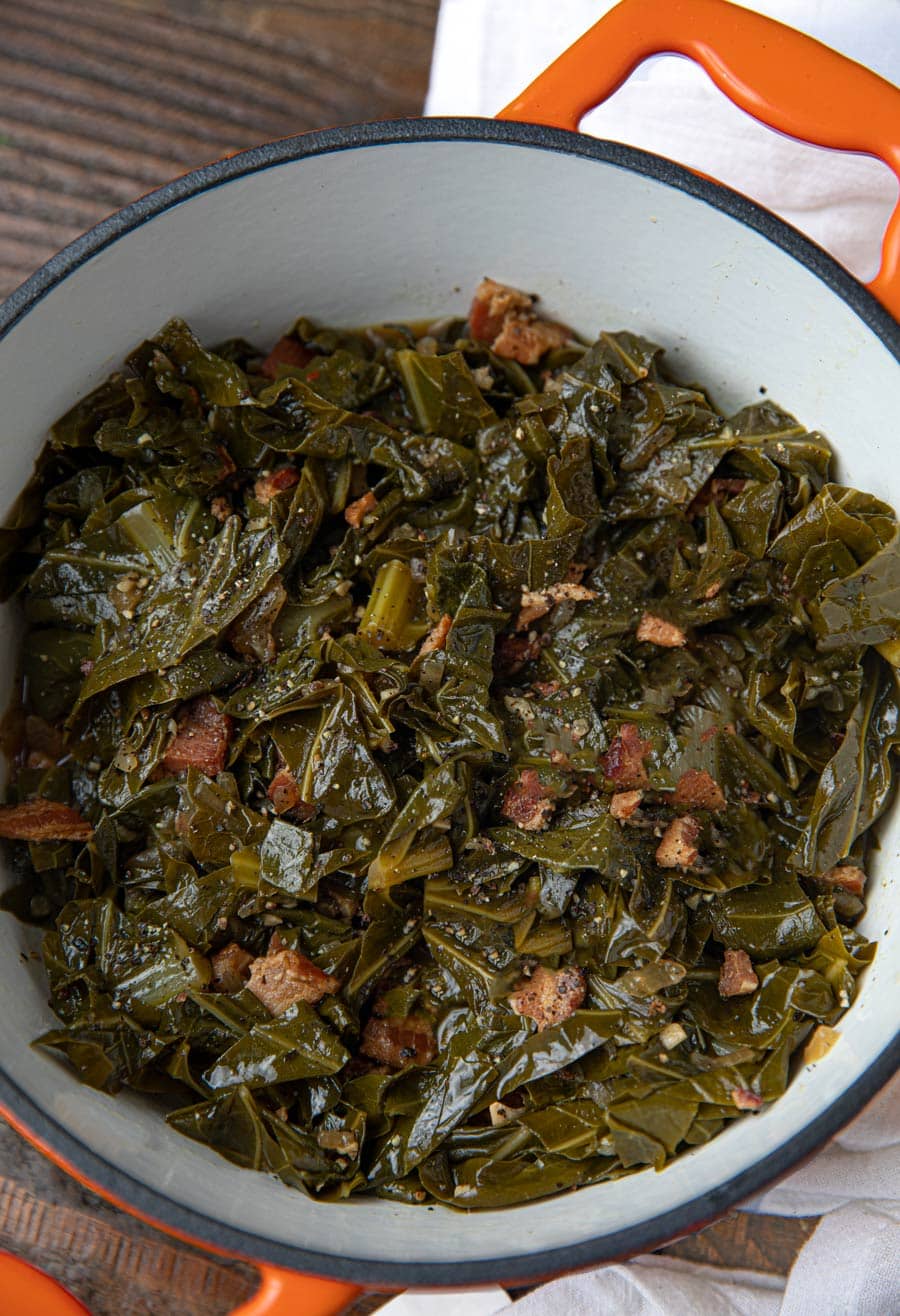
Collard Greens can feel like an intimidating dish to a home cook since they’re such a tough and fibrous green when you buy them at your grocery store. This doesn’t mean you are in for a difficult cooking process. The hardest part about the recipe is waiting for the delicious end result.
These Fresh Collard Greens are flavored with onions and garlic that are sautéed in bacon fat. Then they simmer low and slow in seasoned chicken broth with a touch of brown sugar. When you’re making this recipe, one of the most important things to remember is to time your dishes properly. Short of making a Cajun Roasted Turkey or BBQ Pulled Chicken this recipe is going to take longer than the rest of your meal.
Cooked Collard Greens have a variety of health benefits. They are a great source of Vitamin K, Vitamin A, and Vitamin C. They also are an excellent source of calcium, potassium, folate, and antioxidants. Because this cruciferous vegetable can be tough to chew and digest, it’s commonly served cooked. However, nobody ever said you can’t eat Collard Greens raw, so if you want a wide variety of greens in your salad next time, go for it! I recommend cutting the collard greens thinly to make them easier to chew through.
Of course, if you really want to make a statement at your next family dinner, cook Collard Greens with Mashed Potatoes and a whole Roast Turkey! Anything is possible with this leafy green vegetable, so let’s begin by going over some of the basics.
How to Make Collard Greens
- Cook the bacon on medium heat until it begins to crisp up. Once it does, remove it from the skillet and chop into bite-sized pieces.
- Add olive oil and onion, frying it for 5-7 minutes, stirring frequently, until softened. Afterwards add the garlic and cook an additional 30 seconds before adding in the collard greens.
- After you stir the greens together with the onions and garlic, add in the chicken broth, brown sugar, salt, pepper and red pepper flakes. Stir well, reduce heat to low and simmer for 90 minutes until the collard greens are tender.
More Southern Recipes to Enjoy
Frequently Asked Questions
Any denizen of the South would tell you that if you’re simply steaming these leafy greens plain, then you’re doing it wrong. This recipe is actually part of a New Year’s Day tradition (enjoy it with a traditional Ultimate Garlic Pork Loin Roast!) where eating collard greens with blacked eyed peas for the first time in the new year is supposed to give you good luck for the 364 days ahead. All you really need to do to make Collard Greens more than just a glorified bowl of steamed spinach is to add onion, bacon, and a little bit of brown sugar to tie everything together. You can alter some of the flavor notes to this dish by using apple cider vinegar, or you could throw in some black-eyed peas to complete the dish with a legume-based protein!
They are not. People are justified in asking this question, seeing as how some of the lesser common leafy greens are known to have poisonous qualities. That said, no single study has conclusively proven that Collard Greens are dangerous to consume, either cooked or raw.
Sometimes, it’s best to eat vegetables raw instead of cooked. In this case, the opposite is true. Cooking Collard Greens to the point where they wilt makes them much easier to digest. Better digestion leads to better absorption of essential vitamins and minerals, so even if you sacrifice a small amount of nutrients cooking everything down, your body makes better use of what’s still there!
Collard Greens are quite similar to other fibrous greens, like spinach, Swiss chard, and kale. Kale tends to have greater amount of nutrients within it per serving, but collard greens may be a better option if you have health restrictions on how much you can absorb – vitamin K being a perfect example. Spinach tells the same story, in that it has more nutrient content per serving, but spinach has less fiber. It shouldn’t surprise you that Swiss chard is also similar to both kale and spinach, but Swiss chard has considerably more sodium in it per serving, so collard greens will be your best bet if you’re looking to cut back on your salt intake. Whatever you decide to do is entirely up to you. This recipe we have for you below keeps things simple – that way you have the power to use it as a side if you have a much bigger meal in mind.
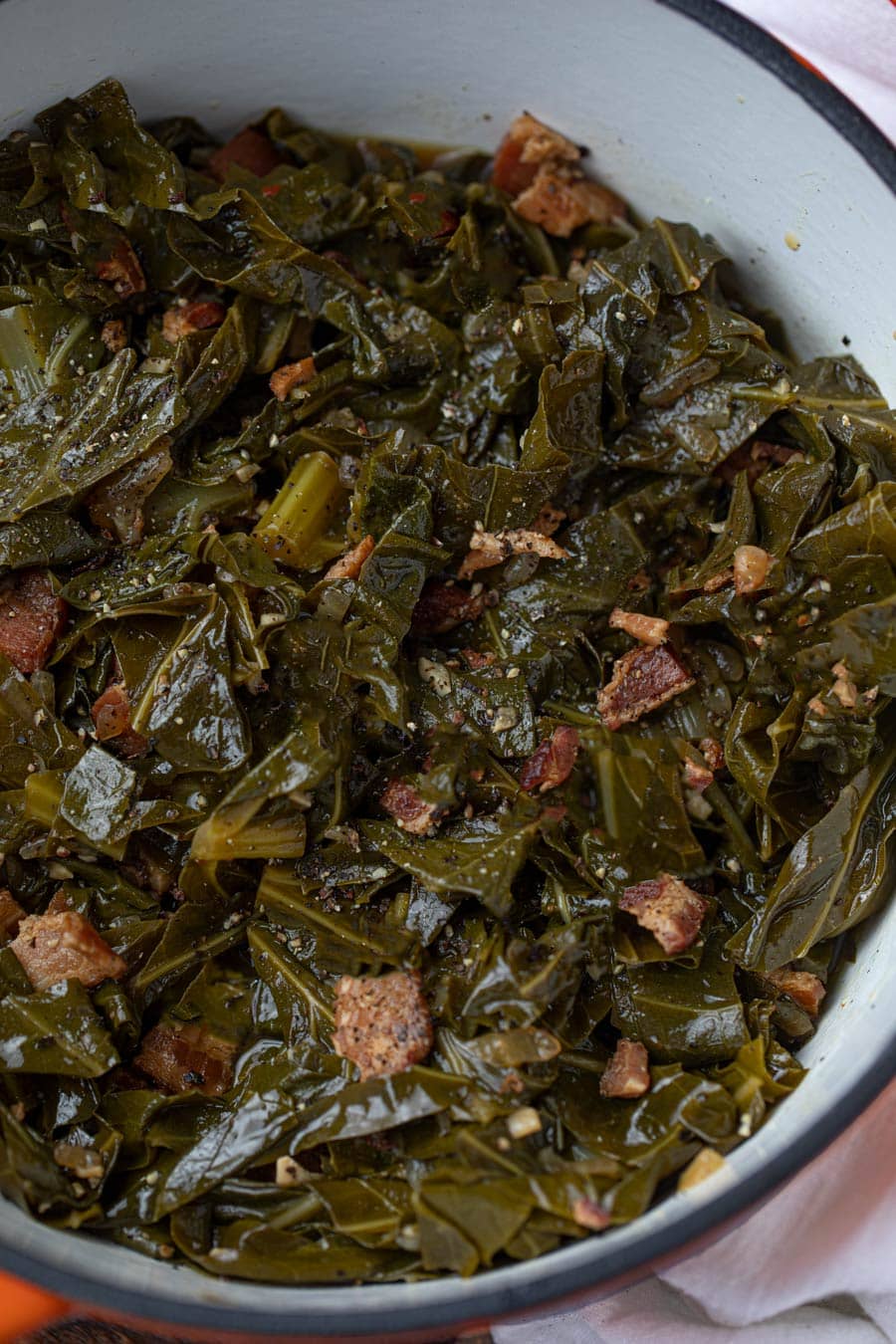
Create a free account to Save Recipes

Key Ingredients in Collard Greens
- Greens: You can find bunches of Collard Greens near the kale and chard in the produce section. Look for fresh greens that have firm, dark green leaves and light stems. They should not look wilted or bend easily, and avoid fresh greens that look yellow or brown, or have spots.
- Pork: You can use any kind of bacon for this Southern Collard Greens recipe. We recommend a thicker cut bacon for a nice chewy texture. Use applewood smoked or your favorite variety. If you substitute the bacon for diced ham or turkey bacon, sauté it in a few tablespoons of oil, and use the same oil for cooking the onions and garlic.
- Broth: Use your favorite brand of boxed chicken broth or keep good quality bullion in the pantry to make it quick and easy to have as much flavorful broth on hand as you need for any recipe.
- Seasonings: Onions and garlic give a delicious aromatic taste and depth of flavor to the cooked greens. The flavor from the broth and bacon will also infuse the greens with lots of flavor. Add salt and pepper slowly and taste as you go to make sure you don’t use more than needed. The bacon will already lend some salt to the dish.
Slow Cooker Collard Greens
The low and slow cooking method is perfect to make tender, delicious Southern-style Collard Greens. Let them simmer away in the crock pot while you prepare the rest of your holiday meal. If you have a leftover ham hock, swap it out for the bacon for even more flavor.
- Add the bacon to a heavy skillet on medium heat and cook it until crisp and the fat has rendered before removing it from your pan and chopping.
- Remove half the bacon fat, add in the vegetable oil, onions, and garlic on low heat, cooking for 5-7 minutes, stirring frequently, until softened.
- Add the raw collard greens to your slow cooker, along with the sautéed garlic and onions, stirring them well to coat them in the oil and onion mixture.
- Add the chicken broth, brown sugar, salt and pepper to the crock pot, stir well and cover.
- Cook on high for 2.5 hours, or on low for 5.5 hours until the collard greens are tender to chew when tasted. Add 1-2 cups chicken broth during cooking time if needed to stay moist.
- Add the bacon into the slow cooker and continue cooking an additional 30 minutes.
More Easy Sides
Variations on Collard Greens
- Cheese: Sprinkle grated Parmesan, cheddar, or Gruyere cheese on your Collard Greens before serving to add a delicious cheesy flavor to your greens.
- Casserole: After braising until tender, transfer your Collard Greens and bacon to a casserole dish and top with a mixture of 1 cup breadcrumbs and 3 tablespoons melted butter. Bake at 400 degrees for 8-10 minutes until golden brown.
- Cajun: Add a dash of cajun seasoning to kick the flavor up a notch. Purchase your favorite cajun spice blend or make your own using 1 teaspoon kosher salt, 1 teaspoon garlic powder, 1 teaspoon paprika, ½ teaspoon ground black pepper, 1 teaspoon onion powder, ½ teaspoon cayenne pepper, ½ teaspoons dried oregano, and ½ teaspoons dried thyme.
How to Store Collard Greens
- Serve: Do not leave your Collard Greens with bacon at room temperature longer than 2 hours.
- Store: Cooked Collard Greens will last in the refrigerator for up to 3 days.
- Freeze: Once completely cooled, seal Collard Greens in an airtight container or plastic bag and freeze up to 6 months. Thaw in the refrigerator before reheating on the stovetop.



Ingredients
- 8 slices bacon
- 2 tablespoons vegetable oil
- 1 yellow onion , chopped
- 2 garlic cloves , minced
- 1 pound collard greens , cut into 2 inch chunks
- 4 cups chicken broth
- 2 tablespoons brown sugar
- 1 teaspoon kosher salt
- 1 teaspoon coarse ground black pepper
Instructions
- Add the bacon to your dutch oven on medium heat and cook it until crisp and the fat has rendered before removing it from your pan and chopping.
- Remove half the bacon fat, add in the vegetable oil, onions, and garlic on low heat, cooking for 5-7 minutes, stirring frequently, until softened.
- Add the collard greens to the pan, stirring them well to coat them in the oil and onion mixture.
- Add the chicken broth, brown sugar, salt and pepper to the dutch oven, stir well and cover.
- Reduce heat to a simmer and cook for 90 minutes until the collard greens are tender to chew when tasted
- Add the bacon back into the dutch oven and stir through.
Nutrition
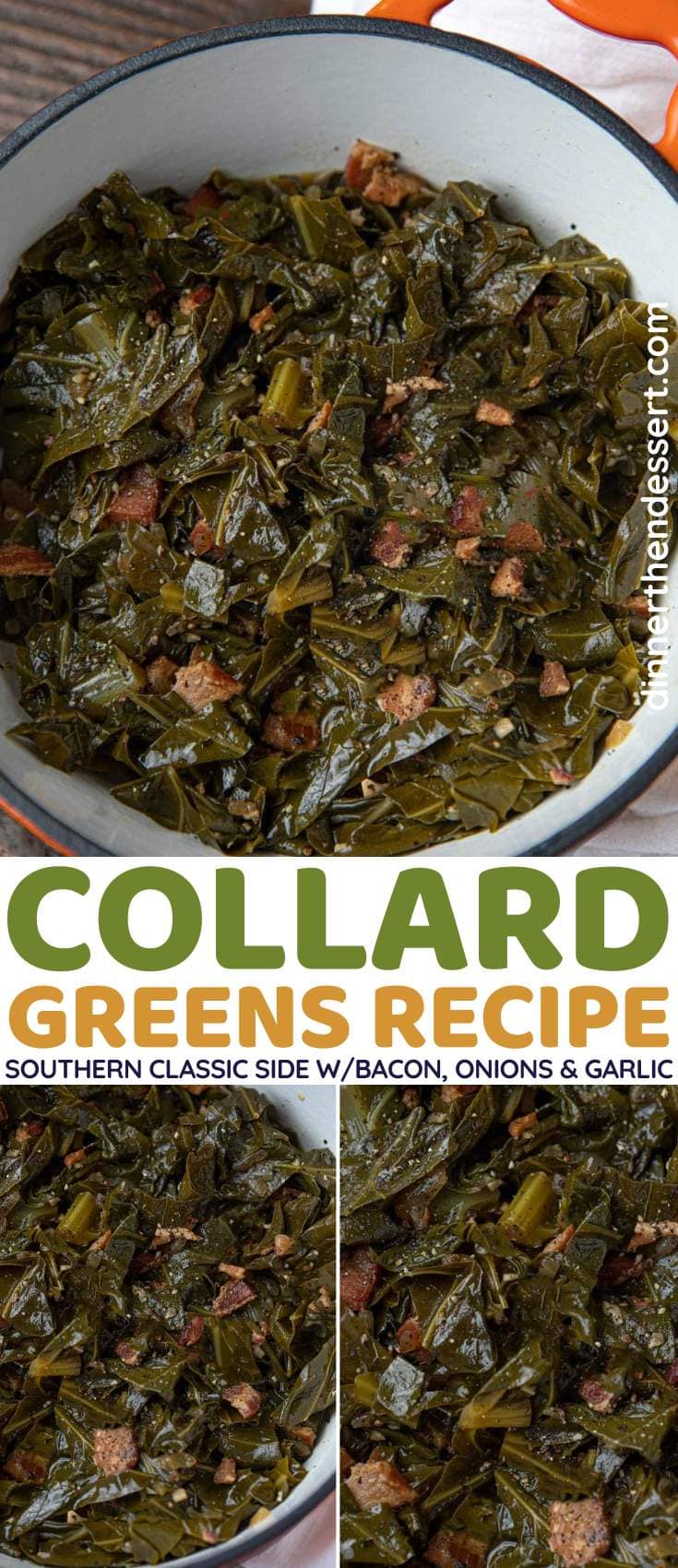
Photo used in a previous version of this post.
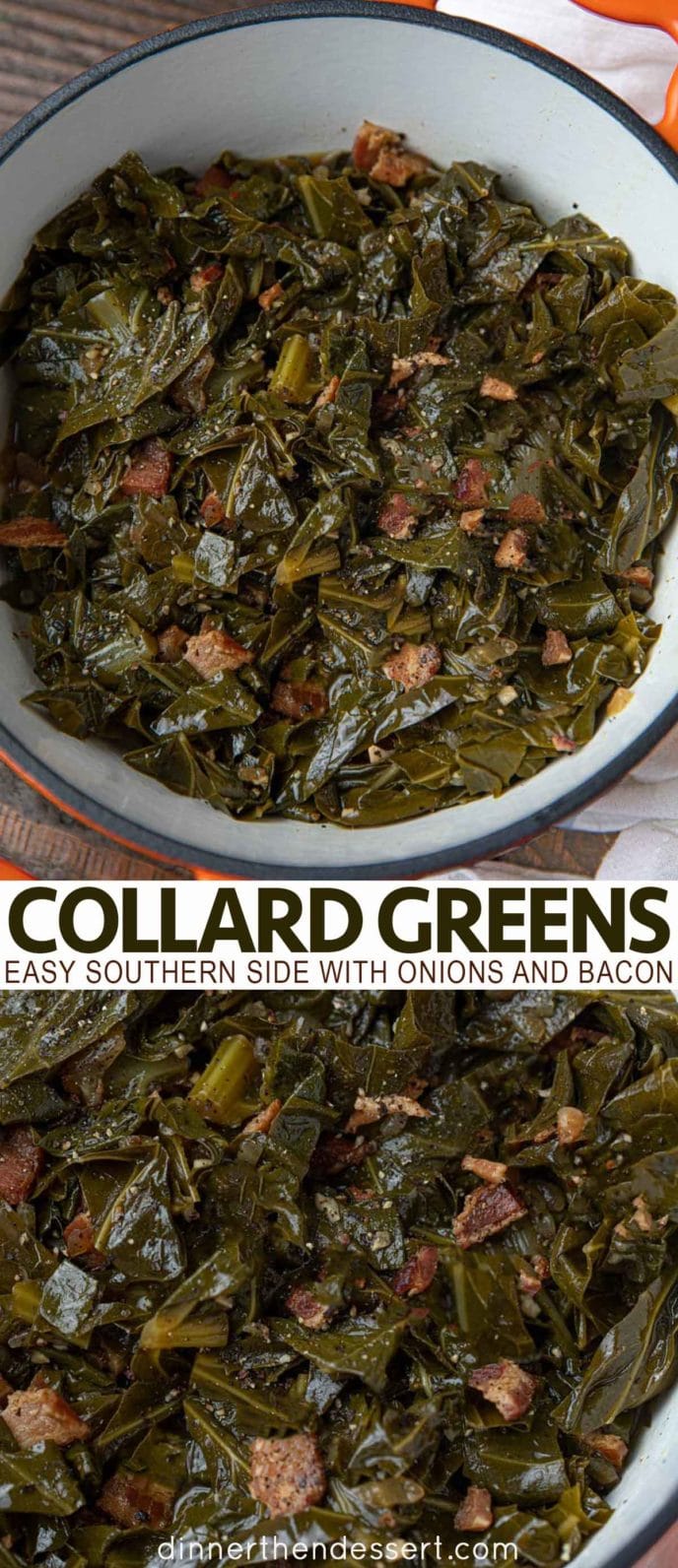
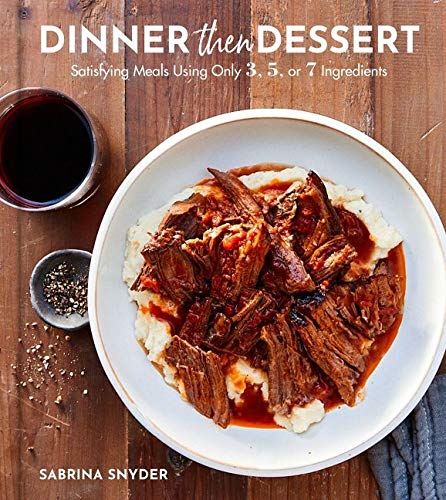
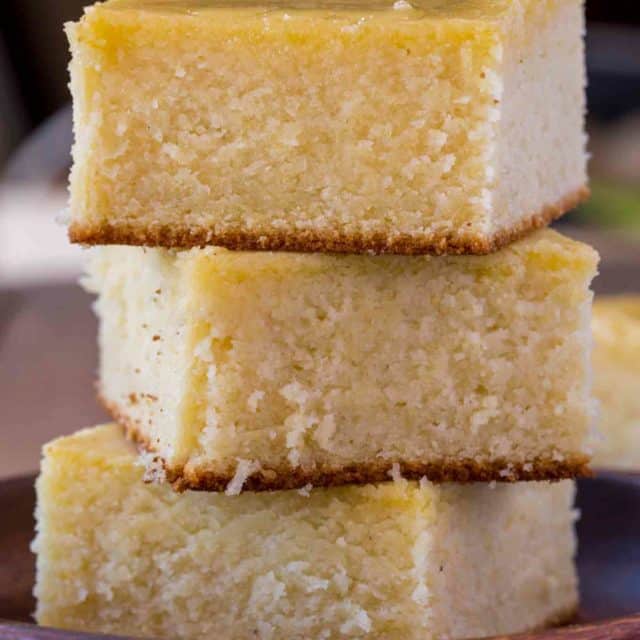

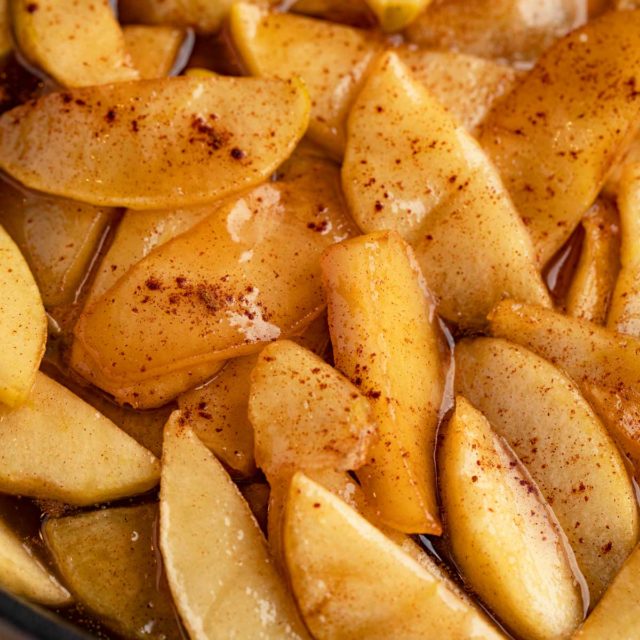
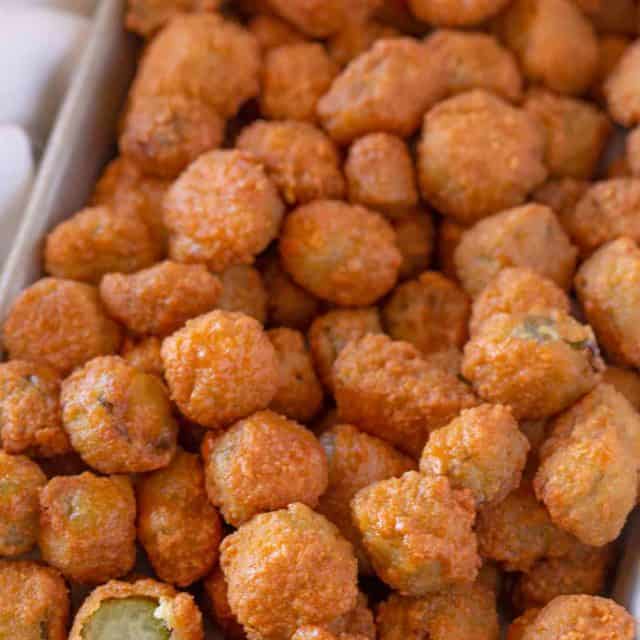
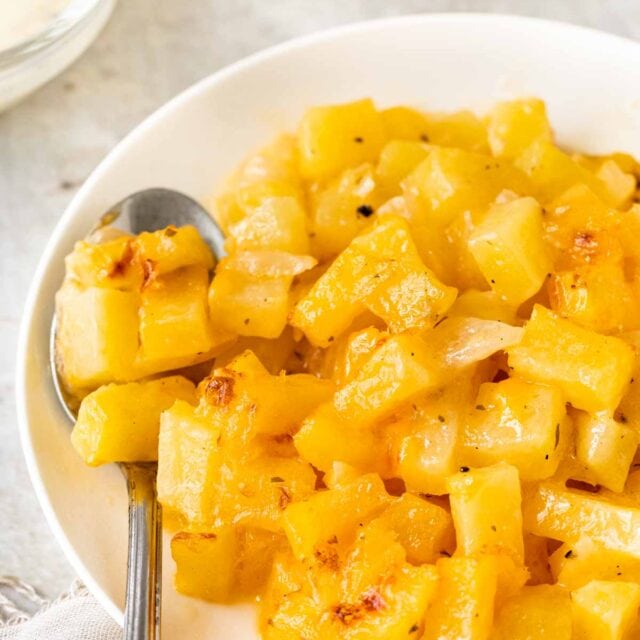


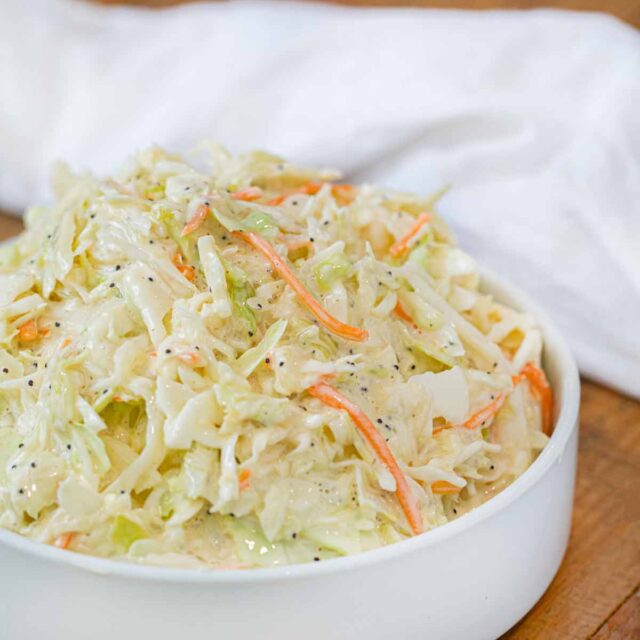
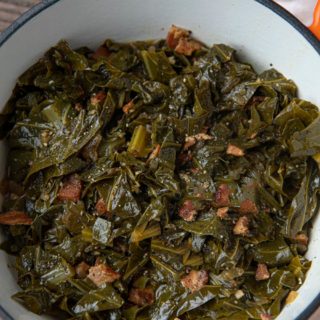

What exactly are collard greens I live in Uk and never heard of them
Collards are vegetables that have large green leaves and tough stems, which are removed before eating. The leafy parts that we eat are called “collard greens.” They’re closely related to cabbage, kale, and mustard greens and are prepared in similar ways.
Collard greens are notable for their heartiness. The sturdy leaves hold up well when cooked for long periods of time, so they’re commonly used in soups and braises.
You also need to wash the mess out of them before cooking. Taste amazing with hot pepper sauce!
Delish
Finally a recipe that makes sense! I have cooked on my own just simmering in broth until they were tender and so good. This recipe will be used for Sunday dinner! I have seen so many recipes that actually have you cook for a few minutes or until wilted! This is not spinach people!! Thank you! Can’t wait!
Absolutely phenomenal!! This was my first time making greens that aren’t in a can and omg my family LOVED them and when I say love I mean I was making these for the next few meals as a side LOL my kids fell in love. New favorite side recipe ?? trying to figure out a way to incorporate these into my turkey and beans, thanks again!!!!!! ?
First time making collard greens for dinner and they were awesome except I didn’t have regular brown sugar so I added my sugar free brown sugar but instead of 2 tablespoon I added one very delicious and I also didn’t fry it up with bacon fat but still came out very good thank you for this recipe I’ll be using it again????
I can’t wait to try this delicious recipe? thank you for using bacon/pork meats- that’s southern Ma’am!
I made these today …they were delicious ?
These were delicious! I did cut the bacon and chicken broth in half because I used a pound of frozen greens. They cooked down perfectly!
Love it! Thanks for the 5 stars, Linda.
Hey, I’m cooking them right now . So I don’t add the bacon until they are done cooking??
Correct, though you’re keeping half the bacon fat to cook the collard greens in. I hope you enjoy them.
I made this tonight and I do believe these are the best collards I have ever eaten. Absolutely delicious. Thank you.
Wow, thank you for the amazing compliment! I appreciate the 5 star rating, Sibylle.
Sabrina, I make these often, and they are awesome! I have family coming for a week, and I do not want to be stuck in the kitchen all day every day. I am cooking as many things ahead as possible. I am wondering if you have ever frozen these. Thanks!
You can make this ahead of time up to a day or two max. I’ve not tried freezing them before but I don’t see why you couldn’t. I’d recommend thawing them in the refrigerator overnight and then reheating, if you do. Good luck!
Thanks Sabrina!
I got about a pound of collard greens in my Misfits box and wasn’t sure how to use them. I had only had them once before, but they were very plain and I did not like them. I bookmarked your recipe and made them today. I guess I do like collard greens! These were full of flavor, delicious, and very tender! I will make this again, for sure.
Yay!! I’m glad you got the chance to give them a try.
Sabrina we Southerners always add some type of heat to the pot. Personally I use red pepper flakes or a vinegar with hot 3 or 4 red peppers to the pot.
I’ve tried other recipes and been disappointed with copycat Chipotle’s what makes your different?
Lastly, I love your recipes!!
Thanks for the tip! I hope you’ll give it a try and that it lives up to your expectation.
These are absolutely wonderful.
I have made a meal out these so many times. Thank you so much for sharing this recipe.
Sabrina, I followed your recipe to the letter. These collard greens were absolutely amazing!! Excellent flavor that just made my southern Easter dinner spectacular. Thank you!!
You’re welcome, Kirstin.
I just made your recipe and my husband said this is now his favorite veggie and I should make this all the time. ?? So delicious! Thank you for this recipe!
Yay!!
The best recipe ever! I can make a meal out of these alone! I’ve now subscribed to your email list as well….all because of this recipe!
Quick question…how big is the suggested serving size? I see it makes 8 servings….is that half cup size servings?
Not that I care, I’m eating it all myself anyway. LOL
Haha, glad you love it so much and thank you for subscribing!
1/2 cup would be considered a serving size for this recipe. Look forward to seeing you around the site.
Per request, I’m cooking collard greens for the first time on Christmas Day as a side with a ham. I’m planning to use this recipe and have a question. Any comments on the “aroma” of cooking collard greens on the day when everyone is coming to your house for the big meal? Thanks for your input!
Usually, the smell comes from the fact that the collard greens were overcooked. There are a few things you can do to help with the “aroma”. Start with fresh collard greens and take the time to cut the stem out before adding them to the pot. Also, try tossing in a few whole pecans to help soak up the odor. I’ve noticed though that cooking it with the bacon helps to reduce that issue. Hope this helps!
Interesting, as a person whose family came from the south I have never heard of the aroma of collard greens coming from them being over cooked, that is a first for me. But thank you for that tip.
Great recipe, Sabrina, and very close to how I make mine.
One variation one can try is adding some smoked turkey wings to the greens after they’ve been cooking awhile, then removing them from the pot. Remove the turkey skin, shred the meat, and return it to the pot. Turns greens from a side dish to a meal by itself.
Amazing suggestion!
Instead of bacon, you should use fat back or a ham hock. Both are salty are are actually used when cooked down south.
Sounds amazing!
I have not tried these yet, but when I go to the grocery store I am going to get some Collard Greens and try these. I do have a question. Could you do these in a crock pot? And if so, how long would you cook them for, and would it be on Low or High? Thanks for any advice or help you can give me. Have a wonderful and blessed day. 🙂
Certainly you can, you just want to make sure that you cook the bacon first. I would cook it low and slow for 4-6 hours.
I loved eating collard greens when I was traveling down south, and this recipe makes me feel like I’m still traveling! It’s so full of flavor and delicious.
So glad you liked it and it brought back some fond memories.
I love this, now if I can only convince my kids! YUM!
Haha if you do, let me know your tactics!
mmmm..this looks incredibly delicious!! YUM!!
Thanks! Hope you enjoy!
I made this last night and everyone loved it! I am definitely making this again!
So glad to hear that!! It’s a good one for when you want to switch up the veggie menu.
What if you don’t have a Dutch oven?
You can use a heavy bottomed pan instead. Or large cast iron skillet 🙂
That is quite a long cooking time but I’m impressed at how well the greens hold up – still plenty of texture and definition in the finished dish. Oh and the bacon just takes the whole dish up a notch. Gorgeous.
Thanks! The bacon is definitely the key!
Such a classic Southern dish that is always so good!
Absolutely! It’s a comfort food for sure.
I have not tried your recipe but it is very close to how we cook collard greens in our Southern house. Our only ingredients are collards, bacon, a half cup of black coffee, and two tablespoons of sugar, though many will also add onions. No spices.
Here is how we cook them:
It’s important to wash the collards by soaking them in the sink to remove odd bits of dirt or sand which the big leaves will collect from splashing rain as they grow. Do not dry the leaves. After soaking we tear the leaves from the large stems and into pieces about half the size of your hand. We do not cook the large stems, but you can if you like.
We add a few tablespoons of canola oil to the Dutch oven to speed up the initial frying and it allows you to reduce the amount of bacon if you desire. Add the 8 slices of bacon heat on high and reduce the heat to medium when the bacon begins to fry. After frying remove the bacon and set aside.
Add the coffee to the pot then scrape the pan a little. Add the collards until the pot is nearly full and then cover. Leave heat on medium and keep the pot covered until done.
From this point no additional liquids are added except what is on the leaves and cooked out of the leaves. Use tongs to turn the leaves over every 5 minutes or so in the beginning to keep leaves from burning and until the liquid starts to collect in the bottom. When a small amount of liquid has collected in the bottom and begins to simmer, turn the heat down to medium low, about 3 on a radiant cook top. Turn the leaves again, thereafter about every 20 minutes.
When the volume of the leaves has reduced to half, sprinkle all the sugar and all the crumbled bacon on top of the leaves and add more leaves on top of the sugar if you have them. Continue adding leaves and turning the leaves every twenty or thirty minutes as the volume reduces until done. Where we live, collards are sold by the “bunch” and we will add leaves twice to use the whole bunch.
Remember to keep the pot covered while cooking. The leaves are in effect steamed and cooked at the same time.
The volume of the leaves will finally reduce to about 20% of the pot volume when done. Taste the collards and remove from the heat when you are satisfied they are done. The collards should be very limp, about like cooked spinach but with thicker leaves. Save the liquid in the bottom of the pot which is mostly liquid cooked out of the collards. This is called pot liquor and if cooked right will be very tasty with cornbread.
This recipe is a little labor intensive but worth the trouble.
Thanks for sharing your family recipe! It’s great to hear from someone as passionate about traditional southern cooking!
I only grow Georgia brand collards, hardy, will grow pretty much spring and summer as well as fall. I use frictional recipe with a few added ingredients. Ham hock, smoked ham, bacon, plus I add bacon grease, (I always save the grease when I cook) , salt, pepper, a little ground red pepper, and Adobo. I always get a lot of compliments and request.
Thanks for the feedback. 🙂
I do not use pork in my vegetables. What do you suggest in place of it.
You can leave it out if you’d like.
I use smoked turkey, usually tails, but sometimes the smoked drumsticks. It flavors the greens very well. Also I’d like to stress washing the greens thoroughly, to avoid grit in this delicious dish.
I come from multiple generations of collard green enthusiasts. My family uses either ham hock, smoked turkey neck or salt pork cooked with the greens for flavor but I am vegan. My vegan greens follows a similar recipe but instead of meat, I use smoked salt as part of the seasoning (reducing the other salt in the recipe accordingly). It really helps give that smoky savory flavor that is missed without meat.